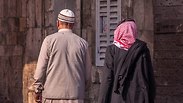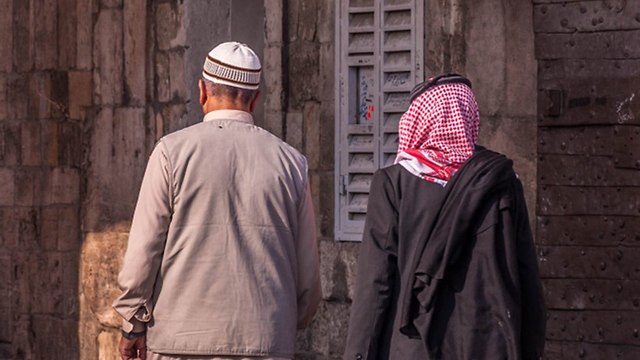

60% of Muslims in Israel graduate high school, only 43% employed
According to the Central Bureau of Statistics, the Muslim population in Israel continues to grow at a rate of 2.5% a year, reaching 1.5 million in 2017; fertility rates also remain high in comparison to other countries in the region; In employment, 72% of Israeli Muslims work in the same five fields.
The annual growth of the Muslim population continues to be 2.5%, similar to the last three years, and thus in 2017 it grew by 38,000 people.
In the past two decades, the Muslim community’s growth rate has declined, dropping from 3.8% to 2.5%. Still, in comparison to other population groups in Israel, this is the highest growth rate. The Jewish population growth rate in 2017 was 1.7%, the Christian was 2.2% and the Druze growth rate stands on 1.4%.
Geographically speaking, half of the Muslim population in Israel is centered in the north (35.6% in the northern district and 13.8% in the Haifa district).
In the center of Israel, 21.8% live in the Jerusalem district, 11% in the central district and only 1.1% in the Tel Aviv district.
Jerusalem has the highest concentration of Muslim inhabitants—329,000, who make up 21% of the Muslim population in Israel and 36.5% of the city’s residents.
The second most populated Muslim community in the country is Rahat, where 66,600 Muslim inhabitants make up 99.8% of the city’s residents.
Other large Muslim communities in Israel are Nazareth (54,300 residents) and Umm al-Fahm (54.2% inhabitants).
When comparing fertility rates of other Muslim communities in West Asia and North Africa, Israel is fourth, after Sudan, Iraq and Yemen. Muslim women’s fertility rate in Israel (3.3 children) is higher than many other countries in the region, like Turkey (2.1 children) and Lebanon (1.7 children), and similar to some countries like Egypt and Jordan.
In 2017, 39,550 Muslim babies were born in Israel, and made up a fifth (21.5%) of all babies born that year.
In the field of education, more than 60% of all seniors in Arab schools were eligable for a high-school diploma, only a little under the equivalent number in Hebrew speaking schools (66%).
The rate of students from the Arab education system who qualified for higher education in 2017 was 47.6%, while the rate of students from Hebrew schools was significantly higher—56.8%.
When looking at the distribution within the Arab education system, we see that only 44.3% of Muslim students qualified for higher education, while 60.8% of Druze students and 71.9% of Christian students met the entry criteria.
In employment, 43.4% of the Muslim population in Israel were employed in 2017, with only 25.3% of Muslim women employed. In comparison, 65.9% of Jewish women were employed, 48.3% of Christian women and 34.9% of Druze women were recorded as employed in 2017.
Unemployment rates in the Israeli Muslim society was 5.1% last year, one percent higher than the rate in Jewish society (4.1%). In the Christian community, unemployment stands at 4.7% and in Druze society 4.3%.
There are five major fields of employment that make 72% of all the jobs held in the Muslim community in Israel: Construction (20%), retail, wholesale and auto repair (17%), education (15%), industry (11%) and health and nursing (10%). The data was published by the Israel Central Bureau of Statistics ahead of and in honor of Eid al-Adha on Tuesday.


















